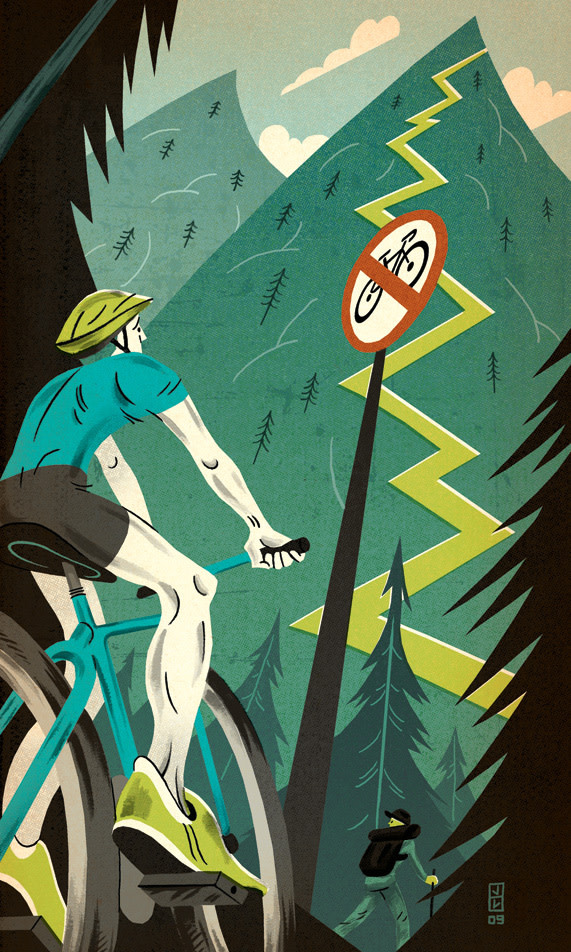Singled Out

For all its recognition as a cyclist’s nirvana, Portland has a dirty little secret: the city is home to only six miles of single-track mountain-biking trails. Nowhere is this dirt deficit more obvious than in Forest Park, where, despite the park’s rank as one of America’s largest urban natural areas at 5,100 acres, there exists a measly one-third of a mile of single-track riding. (There are about thirty miles of dirt roads and fire lanes to ride on, but to serious mountain bikers, those are about as challenging as the Springwater Corridor.)
“Forest Park is the elephant in the room,” says Erik Tonkin, a board member for Northwest Trail Alliance (formerly Portland United Mountain Pedalers, or PUMP), a local mountain-biking nonprofit that contributed to the Forest Park Conservancy’s June white paper on the potential addition of off-road trails to the park. Both groups had hoped to particpate in a forum hosted by Portland Parks and Recreation about where in town to add more off-road biking trails. The forum was set for July, but has now been tabled due to budget cuts.
Desire for single-track riding in Forest Park is hardly new. In fact, fat-tire fiends established PUMP back in 1988 to advocate for single-track in the park, but they had little success. Since then, cries for more single-track have been met with some trepidation from groups like the Forest Park Conservancy (FPC) and the Audubon Society, which cite concerns about trail crowding, erosion, and wildlife disturbance. The issue came up again last year when, after awarding Portland a platinum rating for its bicycle friendliness, the League of American Bicyclists noted our city’s dearth of off-road options. And earlier this year, a Northwest Trail Alliance member proposed a trail-sharing system in Forest Park that would allow bikers and hikers to use some of the existing trails on alternating days.
The proposal met with mixed reactions. Conservationists like Jim Labbe, a specialist with the Audubon Society, worry about the damage bikes might cause to these already well-loved trails. But that doesn’t mean conservationists are opposed to ?allowing single-track in the park.
“Ideally, we need to find a way to pair any new trail construction with habitat restoration efforts,” says Stephen Hatfield, stewardship director for the FPC.
Many conservationists also support adding trails elsewhere in the city, such as the thirty-five-acre parcel of vacant land dubbed “Gateway Green” that lies near the I-205 and I-84 interchange. While the additional off-road options would be welcomed, the intersection of two major freeways is hardly as aesthetically appealing as tree-laden Forest Park.
Mountain bikers crave the same wilderness experience that hikers do, says fat-tire enthusiast Chris DiStefano, which is why they love Forest Park. “People think we’re going to consume the forest,” he says. But, he adds, mountain bikers have a vested interest in caring for the trails, too. Many already volunteer their time to work on trails on Mounts Hood and St. Helens, and in Tillamook State Forest.
Adding trails to Forest Park may not be just a matter of getting all the user groups to agree, though. Bike-trail development is constrained by the Forest Park Natural Resources Management Plan. Adopted by the city in 1995, the 224-page rule book decrees that bikes must remain on paths measuring at least eight feet wide.
“It’s like telling an avid golfer to go play putt-putt,” DiStefano says.
The good news is that the management plan can be altered by an amendment from the city. However, there’s no definitive timetable for such a change. Still, Nick Fish, the city commissioner in charge of parks, says he’s committed to engaging in discussion about additional off-road options in town. “That’s the Portland way,” Fish says. “We’re going to bring both sides together and find common ground.”
And the city’s mountain bikers are hoping that ground will measure farther than a third of a mile.




